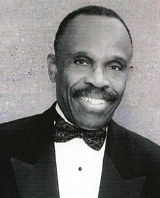| ||||||||||||||||
| Category: Religion |
(requires Adobe Reader)
|
| About the Book | |
|
Although from various regions of Africa’s West coast, slaves were herded together under a harsh American system of slavery. It was from these people that this music sprang. Through the fusion of African musical traditions and European musical culture, slaves created a style that has influenced musical development in America. By unique rhythmic and tonal patterns, indigenous vocal quality, call-and-response form, and percussive instrumentation, Black music formed after the slave trade has had tremendous effect on America’s musical development. During the Great Awakening, slave songs, work songs, field calls, and protest songs were heard, along with revival songs. This was a large evangelistic movement of mass revivals between 1730 and 1910 intended to Christianize many, including Africans. The music of the Awakening highlighted traditional hymns of whites. These were accepted by the Blacks but gradually gave way to preferred livelier evangelistic hymns. These hymns met the needs of the mass revivals, and the singing by Blacks reflected their own interpretations of white hymns and revival songs. Many of the above-listed song types were later called spirituals. They have a striking rhythmic quality as well as similarity to African songs in form and intervallic structure. The lyrics recall the experiences of slavery, suffering, and struggle, and express hope for relief in anticipation of a better day. Choirs of Historically Black Colleges and Universities popularized the appeal of spirituals. Yet meter hymns and quartet songs were the preferences of many congregations. These led ultimately to gospel music, a more advanced style of musical expression. Gospel music is recognized by dotted rhythms of 16ths, 8ths, quarter notes, and triplets. Syncopation is prominent and may lead to handclapping on the second and fourth beats. Other traits are verse and refrain, improvisation, call and response, simple to complex harmonies, passing tones, extended sections called vamps, excessive repetition, and homophonic and polyphonic textures. Often, there is swaying, foot-tapping, and sometimes ‘holy dancing.’ Recently, a new trend has occurred from the influence of technology, pop music, and youthful exploration. It results in new modal concepts, rhythms, tone patterns, excessive chromaticism, and ‘jazzy’ chord progressions. The trend has led to a new harmonic vocabulary. The style of gospel music is aggressive and uninhibited. It incorporates a plethora of past and present forms that began with the spirituals and evangelistic hymns of the late 19th century. In its ‘modern’ style, the music is sometimes marketed as ‘Urban Contemporary Black Gospel’ to distinguish it from other forms of Christian music. Yet, it remains fixed in a basic style that involves choirs, groups, and soloists. With a broad array of new composers, gospel music has become a unique and pervasive art form of American culture that is popularized all over the world. Gospel music remains popular, but within a transformation that integrates modern rhythms and jazz-related harmonies. Transformation notwithstanding, it is believed that the integrity of gospel music should maintain respect for its early tradition: a basic style that inspires, uplifts, and encourages ‘downtrodden and deprived individuals. This book seeks to define gospel music, explore its history and related factors, and acknowledge representative artists and contributors. Lastly, it provides bibliographic information that may benefit future generations. There are suggestions to aspiring directors and musicians to assure their success.
|
|
| Reviews | |
This Handbook is a “must-have” for every lover of Gospel music. Dr. Clency provides deep historical perspectives and supporting appendices that are uniquely enriching. His practical applications for singers and choir directors are especially useful. He even includes specific score study samples to assist aspiring choral conductors. This is a book that combines a comprehensive history of African-American gospel music with a practical handbook for directors of gospel choirs. The book is especially important for those looking to understand the evolution of gospel music in the United States and the contributions of so many gospel personalities. Professor Clency’s unique style of teaching and his extensive musical experiences, in the African-American church, provide him with the tools to help students to recognize how sacred music influences many of our current and past composers and performers.
|
|
| About the Author | |
 |
Charles Clency grew up in the mainstream of Chicago gospel music activity. His background led to positions of conductor, professor, clinician, and keyboardist, as well as organist for Mahalia Jackson. Having earned three music degrees, Dr. Clency led his college choirs to New York’s Carnegie Hall and to China. |

